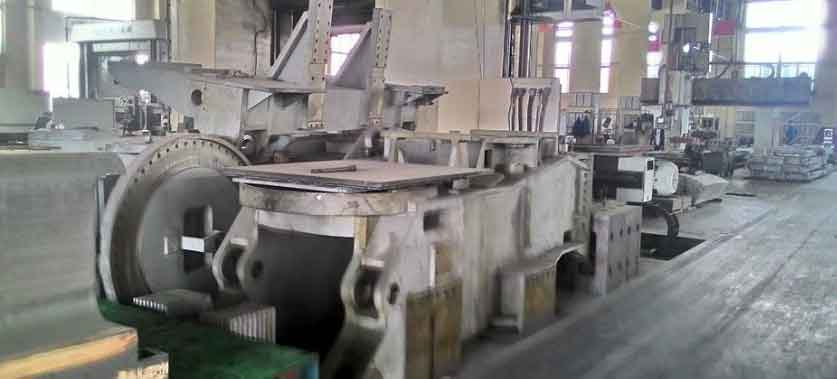Large steel castings play a vital role in various industries, from infrastructure and construction to energy and transportation. These massive and robust components offer exceptional strength and durability, enabling the creation of structures and machinery that can withstand significant loads and harsh environments. Let’s explore the world of large steel castings and their significance in different sectors:

- Infrastructure and Construction:
- Large steel castings are extensively used in the construction industry for infrastructure projects such as bridges, tunnels, and buildings.
- Steel castings provide the necessary strength, stability, and load-bearing capacity required for structural elements like columns, beams, and trusses.
- Their ability to be cast into complex shapes and sizes allows for efficient design and construction of large-scale structures.
- Energy and Power Generation:
- Large steel castings play a crucial role in the energy sector, particularly in power generation facilities.
- They are used in components such as turbine casings, generator housings, and steam turbine rotors.
- These castings withstand high temperatures, pressures, and rotational forces, ensuring reliable and efficient power generation.
- Oil and Gas Industry:
- The oil and gas industry heavily relies on large steel castings for critical equipment and infrastructure.
- Castings are used in offshore platforms, drilling rigs, pipelines, valves, and pumps.
- The ability of steel castings to withstand extreme conditions, including corrosion, high pressures, and harsh environments, makes them essential for the extraction, processing, and transportation of oil and gas.
- Heavy Machinery and Equipment:
- Large steel castings are an integral part of heavy machinery and equipment used in mining, construction, and manufacturing industries.
- Components such as gearboxes, machine frames, crushing equipment, and excavator buckets require the strength and durability provided by steel castings.
- These castings withstand heavy loads, impact forces, and abrasive conditions, ensuring the reliable operation of heavy machinery.
- Transportation and Automotive:
- Large steel castings find application in the transportation sector, particularly in the manufacturing of trains, railway tracks, and heavy-duty vehicles.
- Components like axles, wheels, couplers, and locomotive frames require the strength and wear resistance offered by steel castings.
- Steel castings in the automotive industry are used in components such as engine blocks, transmission housings, and suspension parts, contributing to vehicle performance and safety.
- Defense and Aerospace:
- The defense and aerospace sectors utilize large steel castings for critical components in aircraft, missiles, tanks, and naval vessels.
- Castings are used in structural parts, engine components, landing gear, and armor plating, providing the necessary strength, impact resistance, and protection.
The production of large steel castings involves advanced manufacturing techniques such as sand casting, investment casting, and centrifugal casting. The casting process ensures the integrity, dimensional accuracy, and metallurgical properties required for these heavy-duty components.
Large steel castings offer numerous advantages, including high strength, excellent fatigue resistance, heat resistance, and the ability to be machined and welded. Their use in various industries enables the creation of robust and durable structures and machinery that can withstand challenging operating conditions.
With ongoing advancements in casting technology, metallurgy, and quality control processes, the world of large steel castings continues to evolve, pushing the boundaries of what is possible in terms of size, complexity, and performance.
